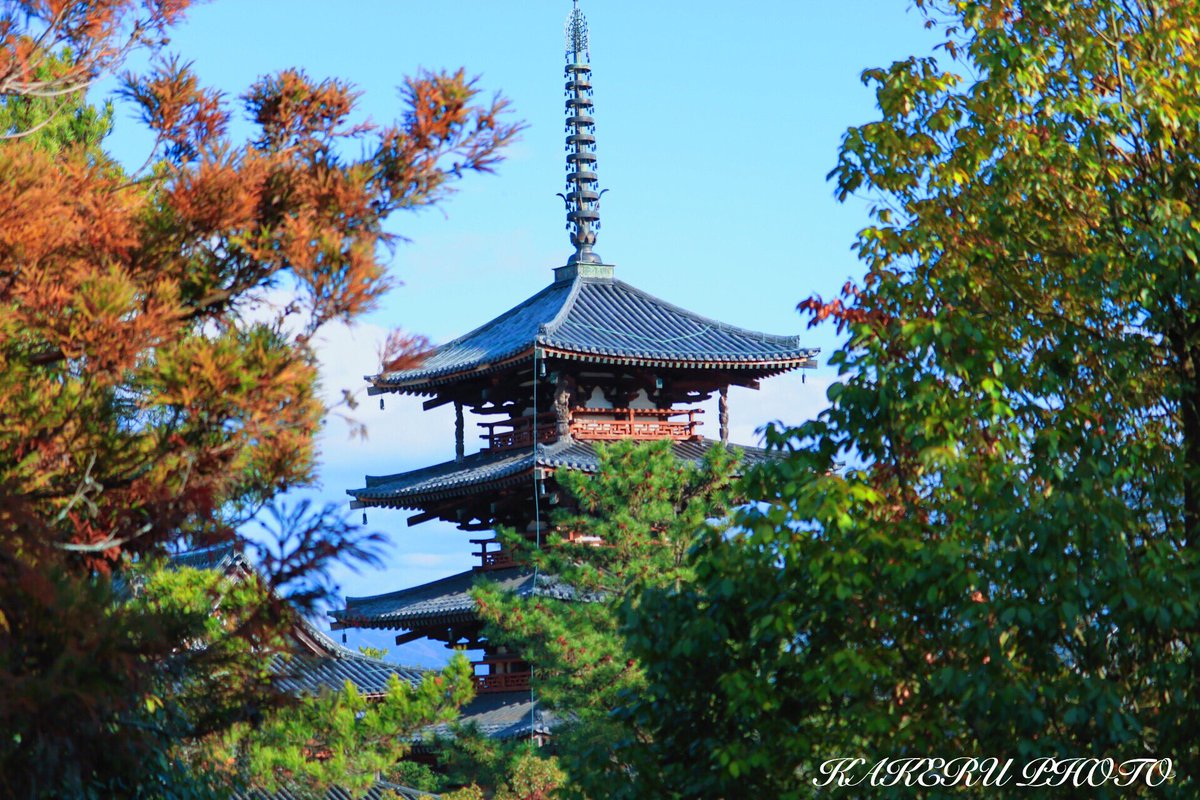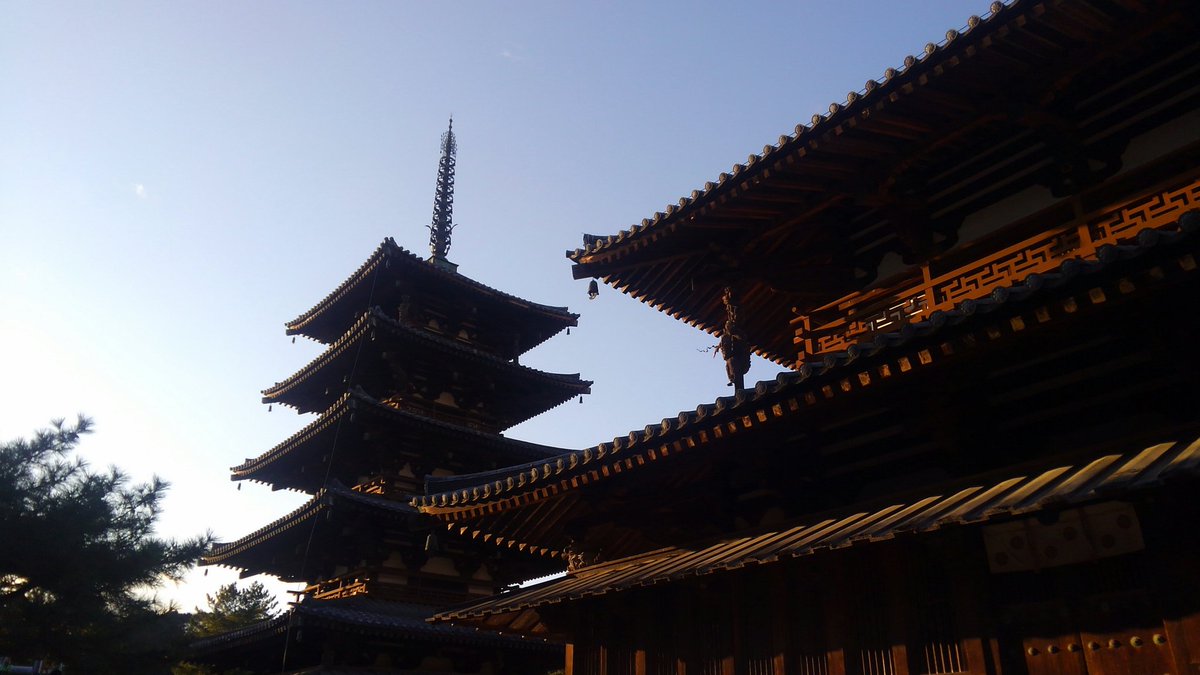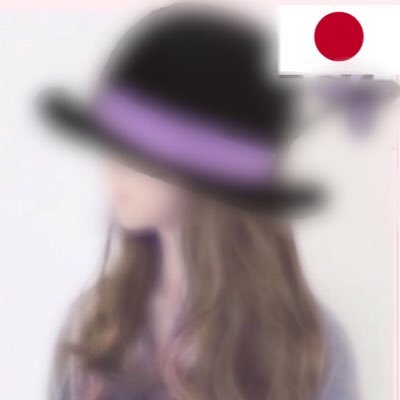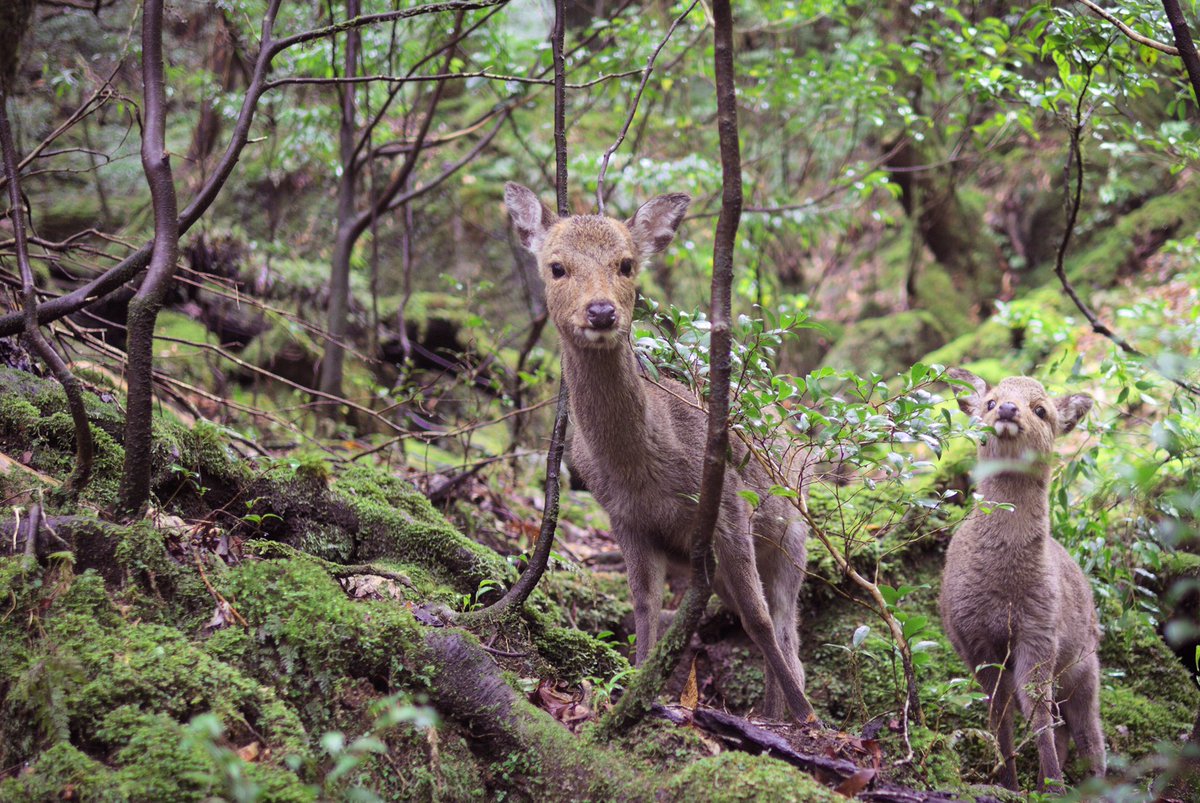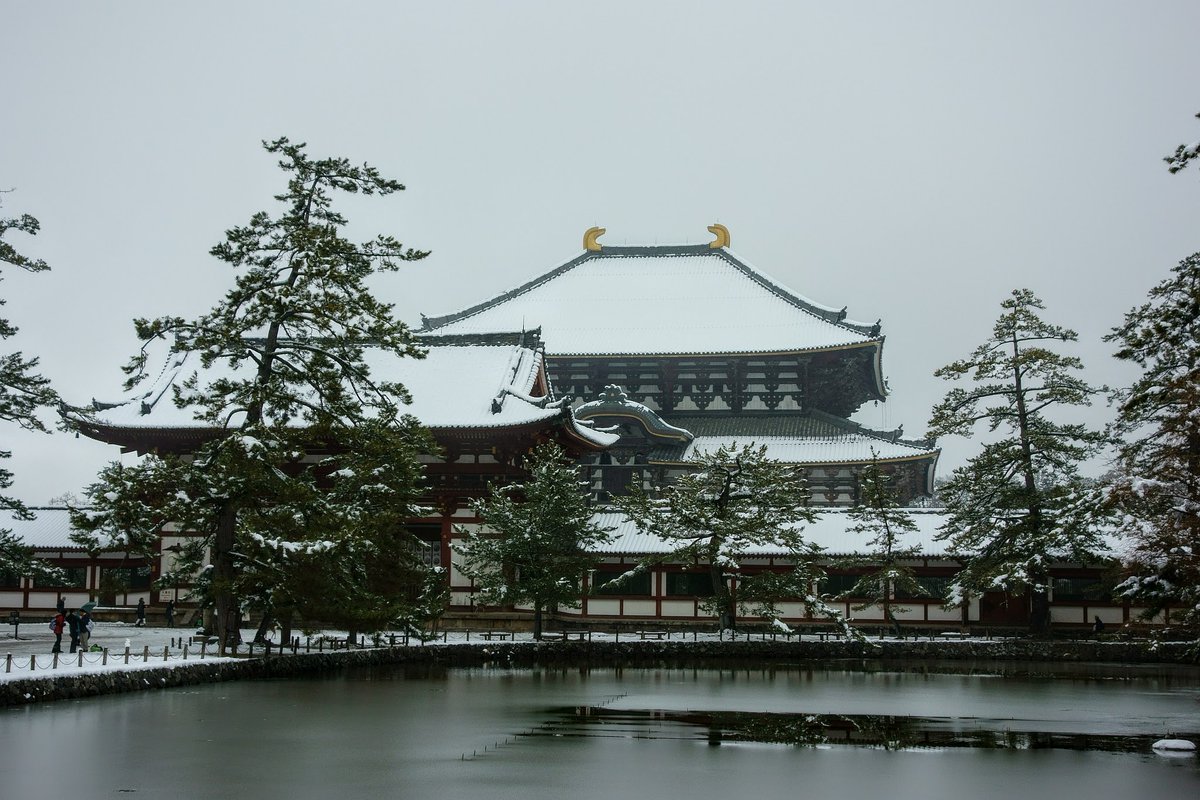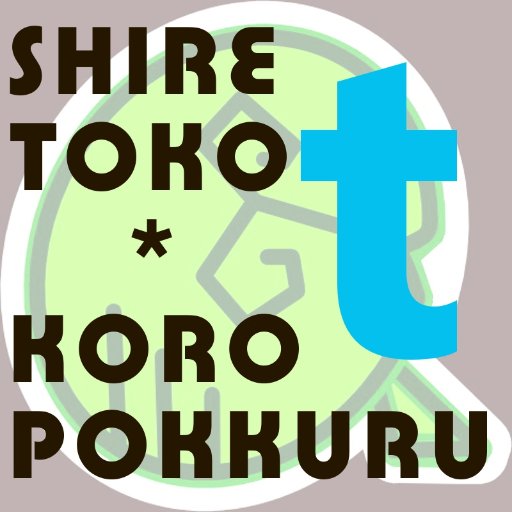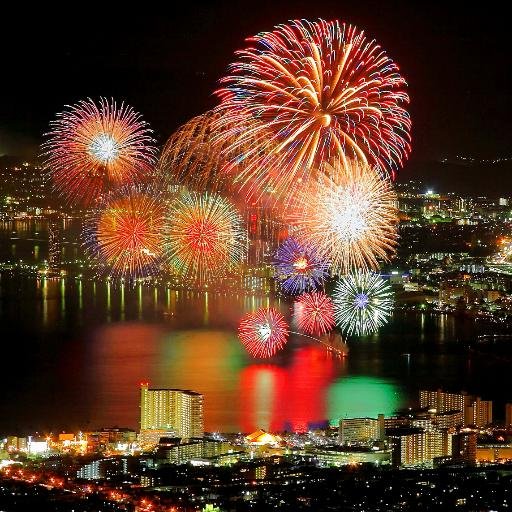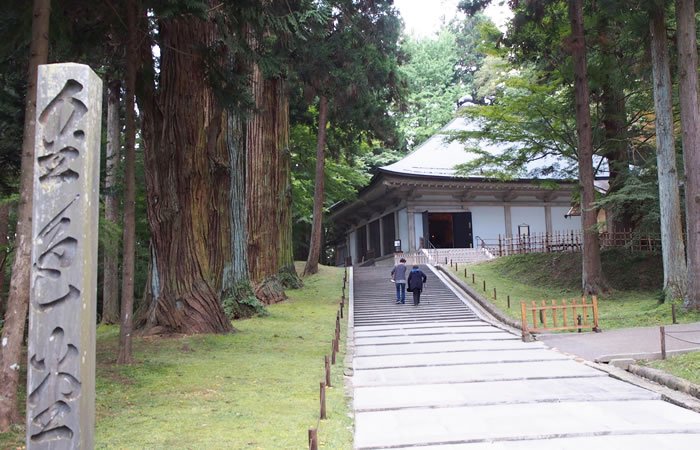Complete list of World Heritage Sites in Japan
There are 20 world heritages in Japan
26 out of 47 prefectures of Japan have world heritages.
Some of them are not famous among even Japanese people. However all of them has histories or magnificent nature.
In this article, I would like to introduce all the world heritages in Japan.
If you get a chance, I would like you to visit every heritage.
Some of them are not famous among even Japanese people. However all of them has histories or magnificent nature.
In this article, I would like to introduce all the world heritages in Japan.
If you get a chance, I would like you to visit every heritage.
1. Buddhist Monuments in the Hōryū-ji Area / 法隆寺地域の仏教建造物
Hōryū-ji (法隆寺?, lit. Temple of the Flourishing Law) is a Buddhist temple that was once one of the powerful Seven Great Temples, in Ikaruga, Nara Prefecture, Japan. Its full name is Hōryū Gakumonji (法隆学問寺), or Learning Temple of the Flourishing Law, the complex serving as both a seminary and monastery.
The temple's pagoda is widely acknowledged to be one of the oldest wooden buildings existing in the world, underscoring Hōryū-ji's place as one of the most celebrated temples in Japan.[1][2] In 1993, Hōryū-ji was inscribed together with Hokki-ji as a UNESCO World Heritage Site under the name Buddhist Monuments in the Hōryū-ji Area. The Japanese government lists several of its structures, sculptures and artifacts as National Treasures. A study of its shinbashira, the central wooden column almost suspended inside the Tō in 2001 led to a conclusion about the structure being older than previously thought by a century.
The temple's pagoda is widely acknowledged to be one of the oldest wooden buildings existing in the world, underscoring Hōryū-ji's place as one of the most celebrated temples in Japan.[1][2] In 1993, Hōryū-ji was inscribed together with Hokki-ji as a UNESCO World Heritage Site under the name Buddhist Monuments in the Hōryū-ji Area. The Japanese government lists several of its structures, sculptures and artifacts as National Treasures. A study of its shinbashira, the central wooden column almost suspended inside the Tō in 2001 led to a conclusion about the structure being older than previously thought by a century.
Source: Wikipedia
2. Himeji-jō / 姫路城
Himeji Castle (姫路城 Himeji-jō?) is a hilltop Japanese castle complex located in Himeji, in Hyōgo Prefecture, Japan. The castle is regarded as the finest surviving example of prototypical Japanese castle architecture, comprising a network of 83 buildings with advanced defensive systems from the feudal period.[7] The castle is frequently known as Hakuro-jō or Shirasagi-jō ("White Egret Castle" or "White Heron Castle") because of its brilliant white exterior and supposed resemblance to a bird taking flight.[6][8]
Himeji Castle dates to 1333, when Akamatsu Norimura built a fort on top of Himeyama hill. The fort was dismantled and rebuilt as Himeyama Castle in 1346, and then remodeled into Himeji Castle two centuries later. Himeji Castle was then significantly remodeled in 1581 by Toyotomi Hideyoshi, who added a three-story castle keep. In 1600, Tokugawa Ieyasu awarded the castle to Ikeda Terumasa for his help in the Battle of Sekigahara, and Ikeda completely rebuilt the castle from 1601 to 1609, expanding it into a large castle complex.[3] Several buildings were later added to the castle complex by Honda Tadamasa from 1617 to 1618.[5] For over 400 years, Himeji Castle has remained intact, even throughout the extensive bombing of Himeji in World War II, and natural disasters such as the 1995 Great Hanshin earthquake.[3][2][9]
Himeji Castle is the largest and most visited castle in Japan, and it was registered in 1993 as one of the first UNESCO World Heritage Sites in the country.[2] The area within the middle moat of the castle complex is a designated Special Historic Site and five structures of the castle are also designated National Treasures.[5][10] Along with Matsumoto Castle and Kumamoto Castle, Himeji Castle is considered one of Japan's three premier castles.[11] In order to preserve the castle buildings, it underwent restoration work for several years and reopened to the public on March 27, 2015.[12] The works also removed decades of dirt and grime, restoring the formerly gray roof to its original brilliant white color.
Himeji Castle dates to 1333, when Akamatsu Norimura built a fort on top of Himeyama hill. The fort was dismantled and rebuilt as Himeyama Castle in 1346, and then remodeled into Himeji Castle two centuries later. Himeji Castle was then significantly remodeled in 1581 by Toyotomi Hideyoshi, who added a three-story castle keep. In 1600, Tokugawa Ieyasu awarded the castle to Ikeda Terumasa for his help in the Battle of Sekigahara, and Ikeda completely rebuilt the castle from 1601 to 1609, expanding it into a large castle complex.[3] Several buildings were later added to the castle complex by Honda Tadamasa from 1617 to 1618.[5] For over 400 years, Himeji Castle has remained intact, even throughout the extensive bombing of Himeji in World War II, and natural disasters such as the 1995 Great Hanshin earthquake.[3][2][9]
Himeji Castle is the largest and most visited castle in Japan, and it was registered in 1993 as one of the first UNESCO World Heritage Sites in the country.[2] The area within the middle moat of the castle complex is a designated Special Historic Site and five structures of the castle are also designated National Treasures.[5][10] Along with Matsumoto Castle and Kumamoto Castle, Himeji Castle is considered one of Japan's three premier castles.[11] In order to preserve the castle buildings, it underwent restoration work for several years and reopened to the public on March 27, 2015.[12] The works also removed decades of dirt and grime, restoring the formerly gray roof to its original brilliant white color.
Source: Wikipedia
きただにひろし@gokigensandany
3. Yakushima / 屋久島
Yakushima (屋久島?) is one of the Ōsumi Islands belonging to Kagoshima Prefecture, Japan. The island, 504.88 km² in area, has a population of 13,178. Access to the island is by hydrofoil ferry (7 or 8 times a day from Kagoshima, depending on the season), slow car ferry (once or twice a day from Kagoshima), or by air to Yakushima Airport (3 to 5 times daily from Kagoshima, once daily from Fukuoka and once daily from Osaka). Administratively, the whole island is the town of Yakushima. The town also serves neighbouring Kuchinoerabujima. The majority of the island is within the borders of the Kirishima-Yaku National Park.[1]
Yakushima's electricity is more than 50% hydroelectric, and surplus power has been used to produce hydrogen gas in an experiment by Kagoshima University. The island has been a test site for Honda's hydrogen fuel cell vehicle research. (There are no hydrogen cars stationed on the island but electric cars are run by the municipality.)
Yakushima's electricity is more than 50% hydroelectric, and surplus power has been used to produce hydrogen gas in an experiment by Kagoshima University. The island has been a test site for Honda's hydrogen fuel cell vehicle research. (There are no hydrogen cars stationed on the island but electric cars are run by the municipality.)
Source: Wikipedia
屋久島旅人ガイド太田・おおたさん^^!@yakushimadas
4. Shirakami-Sanchi / 白神山地
Shirakami-Sanchi (白神山地?, literally white god mountain area) is a UNESCO World Heritage Site in northern Honshu, Japan. This mountainous, unspoiled expanse of virgin forest straddles both Akita and Aomori Prefectures. Of the entire 1,300 km², a tract covering 169.7 km² was included in the list of World Heritage Sites in 1993. Siebold's beech trees make up a large portion of the forest.
Source: Wikipedia
綺麗すぎる世界遺産@_world_bestview
白神山地(日本)-青森県の南西部から秋田県北西部にかけて広がっている標高1,000m級の山岳地帯。 1993年屋久島と並び日本初のユネスコ世界遺産に登録。 人の影響をほとんど受けていない原生的なブナ天然林が世界最大級の規模で分布。 https://t.co/O5lgB6UPrl
5. Historic Monuments of Ancient Kyoto / 古都京都の文化財
てる♪Ю―(^▽^o) ♪@terusannnohibi
おはようございます☕
日曜日の朝、今日も寒い1日になりそうですね😓
昨日少しだけ見れた雪景色です⛄
今日も暖かくして良い1日をお過ごし下さい~o(^o^)o
#下鴨神社 https://t.co/TC251c2ZRA
日曜日の朝、今日も寒い1日になりそうですね😓
昨日少しだけ見れた雪景色です⛄
今日も暖かくして良い1日をお過ごし下さい~o(^o^)o
#下鴨神社 https://t.co/TC251c2ZRA
W.H. and N.T. in Jp@ntwhjp
6. Historic Villages of Shirakawa-go and Gokayama / 白川郷・五箇山の合掌造り集落
Shirakawa (白川村 Shirakawa-mura?) is a village located in Ōno District, Gifu Prefecture, Japan. It is best known for being the site of Shirakawa-gō, a small, traditional village showcasing a building style known as gasshō-zukuri.
As of July 2011, the village has an estimated population of 1,734. The total area is 356.55 km2 (137.66 sq mi).
The village is located near Takayama, in Gifu. Together with Gokayama in Nanto, Toyama, it is one of UNESCO's World Heritage Sites.
As of July 2011, the village has an estimated population of 1,734. The total area is 356.55 km2 (137.66 sq mi).
The village is located near Takayama, in Gifu. Together with Gokayama in Nanto, Toyama, it is one of UNESCO's World Heritage Sites.
Source: Wikipedia
Asuka@asuka_____i
白川郷の定番撮影スポットから…
雪が激しすぎたり、止んでしまったりで、思ったようにはなかなかいかず…(^-^;
#白川郷
#合掌造り
#Sonyalpha https://t.co/Xc1eVHYk74
雪が激しすぎたり、止んでしまったりで、思ったようにはなかなかいかず…(^-^;
#白川郷
#合掌造り
#Sonyalpha https://t.co/Xc1eVHYk74
7. Hiroshima Peace Memorial (Genbaku Dome) / 原爆ドーム
'Hiroshima Peace Memorial (広島平和記念碑 Hiroshima heiwa kinenhi?), commonly called the Atomic Bomb Dome or Genbaku Dōmu (原爆ドーム?, A-Bomb Dome), in Hiroshima, Japan, is part of the Hiroshima Peace Memorial Park and was designated a UNESCO World Heritage Site in 1996. The ruin serves as a memorial to the people who were killed in the atomic bombing of Hiroshima on August 6 1945. Over 70,000 people were killed instantly, and another 70,000 suffered fatal injuries from the radiation.[1]
Source: Wikipedia
日本の観光名所bot@japanese_meisyo
平和記念碑(原爆ドーム)【広島県】
日本の広島市に投下された原子爆弾の惨禍を今に伝える記念碑。ユネスコの世界遺産に登録されており、「二度と同じような悲劇が起こらないように」との戒めや願いをこめて、特に負の世界遺産と呼ばれている。 https://t.co/7pqVMIakwG
日本の広島市に投下された原子爆弾の惨禍を今に伝える記念碑。ユネスコの世界遺産に登録されており、「二度と同じような悲劇が起こらないように」との戒めや願いをこめて、特に負の世界遺産と呼ばれている。 https://t.co/7pqVMIakwG
8. Itsukushima Shrine / 厳島神社
Itsukushima (厳島?) is an island in the western part of the Inland Sea of Japan, located in the northwest of Hiroshima Bay. It is popularly known as Miyajima (宮島?), which in Japanese means the Shrine Island.[1] The island is one of Hayashi Gahō's Three Views of Japan specified in 1643. Itsukushima is part of the city of Hatsukaichi in Hiroshima Prefecture. The island was part of the former town of Miyajima before the 2005 merger with Hatsukaichi.
Itsukushima is famous for the Itsukushima Shrine, a UNESCO World Heritage Site.[2] According to records, the shrine was established in the time of Empress Suiko. The warrior-courtier Taira no Kiyomori gave the shrine its present form. In 1555, Mōri Motonari defeated Sue Harukata at the Battle of Miyajima. Toyotomi Hideyoshi built a large building, the Senjō-kaku, on a hill above the shrine.
Itsukushima has a number of temples, including Toyokuni Shrine with a five-storied pagoda,[3] and Daiganji Temple - one of the three most famous Benzaiten temples of Japan.[4] The island is also famous for its upper hill side cherry blossoms and maple leaf autumn foliage.[5]
The island of Itsukushima, including the waters around it (part of Seto Inland Sea), are within Setonaikai National Park. This sea is affected by strong tides. At low tide, the bottom of the sea is exposed past the island's torii. At high tide, the sea covers all the previously exposed seabed mud and fills areas underneath the shrine boardwalk.
Itsukushima is famous for the Itsukushima Shrine, a UNESCO World Heritage Site.[2] According to records, the shrine was established in the time of Empress Suiko. The warrior-courtier Taira no Kiyomori gave the shrine its present form. In 1555, Mōri Motonari defeated Sue Harukata at the Battle of Miyajima. Toyotomi Hideyoshi built a large building, the Senjō-kaku, on a hill above the shrine.
Itsukushima has a number of temples, including Toyokuni Shrine with a five-storied pagoda,[3] and Daiganji Temple - one of the three most famous Benzaiten temples of Japan.[4] The island is also famous for its upper hill side cherry blossoms and maple leaf autumn foliage.[5]
The island of Itsukushima, including the waters around it (part of Seto Inland Sea), are within Setonaikai National Park. This sea is affected by strong tides. At low tide, the bottom of the sea is exposed past the island's torii. At high tide, the sea covers all the previously exposed seabed mud and fills areas underneath the shrine boardwalk.
Source: Wikipedia
9. Historic Monuments of Ancient Nara / 古都奈良の文化財
世界遺産好き!@fsc7777
【日本/奈良】古都奈良の文化財
平城京として栄えた歴史を伝える歴史的遺稿が「古都奈良の文化財」である。唐の長安をモデルにした平城京は、東大寺、興福寺、元興寺、薬師寺、唐招提寺、春日大社、春日原始林、平城京跡の8物件。 https://t.co/qByF8xFEbn
平城京として栄えた歴史を伝える歴史的遺稿が「古都奈良の文化財」である。唐の長安をモデルにした平城京は、東大寺、興福寺、元興寺、薬師寺、唐招提寺、春日大社、春日原始林、平城京跡の8物件。 https://t.co/qByF8xFEbn
suizou@suizou
奈良は京都より寒いけどなかなか積もらないのですが、古都の雪景色も粋なものです。鹿さんは雪でも元気いっぱいだしw こちらは3年前に雪が積もった時の「なら瑠璃絵」 https://t.co/g5LjPgZRBS https://t.co/k0M45BJBf9
10. Shrines and Temples of Nikkō / 日光の社寺
世界遺産オンラインガイド@WorldHeritage00
11. Gusuku Sites and Related Properties of the Kingdom of Ryukyu / 琉球王国のグスク及び関連遺産群
世界遺産@heritage_TBS
次回、2月5日の放送は、沖縄の「琉球王国のグスク及び関連遺産群」です。かつて沖縄で栄えた琉球王国、その頃作られた独特の城をグスクといいます。最も有名なグスクは、那覇の首里城。写真は、その首里城の守礼門です。 https://t.co/2vjTb36voY
世界遺産好き!@fsc7777
【日本/沖縄県】琉球王国のグスク及び関連遺産群
15世紀~19世紀にかけて存在した琉球王国の文化を今に伝える遺産群である。日本や明、東南アジアなどとの中継貿易で栄えた琉球では、当時の日本文化とは異なる独自の文化が形成された。 https://t.co/Kh57ofwEC5
15世紀~19世紀にかけて存在した琉球王国の文化を今に伝える遺産群である。日本や明、東南アジアなどとの中継貿易で栄えた琉球では、当時の日本文化とは異なる独自の文化が形成された。 https://t.co/Kh57ofwEC5
12. Sacred Sites and Pilgrimage Routes in the Kii Mountain Range / 紀伊山地の霊場と参詣道
世界遺産好き!@fsc7777
【日本/和歌山・奈良・三重】紀伊山地の霊場と参詣道
和歌山県を中心に3県にまたがる紀伊山地には、古代から信仰を集めた霊場が点在している。世界遺産には、吉野・大峯、熊野三山、高野山の3つの霊場と、それらを結ぶ参詣道が登録されている。 https://t.co/p9pl2bWa3t
和歌山県を中心に3県にまたがる紀伊山地には、古代から信仰を集めた霊場が点在している。世界遺産には、吉野・大峯、熊野三山、高野山の3つの霊場と、それらを結ぶ参詣道が登録されている。 https://t.co/p9pl2bWa3t
【閲覧注意】心霊スポット@__Spirit_Spots
【No.0638:那智滝】和歌山県東牟婁郡那智勝浦町那智山にある滝。日本三名瀑の一つで、2004年に『紀伊山地の霊場と参詣道』として世界遺産にも登録された。「心霊写真が撮れる」「不浄霊が漂っている」などの噂がある。 https://t.co/EvhNcS9mX4
13. Shiretoko / 知床
知床@つよぽっくる@tsuyopokkur
昨日は網走で流氷初日。
今日はウトロで流氷初日(諸説あり)。
天候にも恵まれて、真っ青な海に白い流氷✨
知床連山だって、ふりかえれば、美しいカタチ!
夕陽まで...なんて、出来すぎた一日が怖い。 https://t.co/6mQ37FJdC8
今日はウトロで流氷初日(諸説あり)。
天候にも恵まれて、真っ青な海に白い流氷✨
知床連山だって、ふりかえれば、美しいカタチ!
夕陽まで...なんて、出来すぎた一日が怖い。 https://t.co/6mQ37FJdC8
14. Iwami Ginzan Silver Mine and its Cultural Landscape / 石見銀山遺跡とその文化的景観
【厳選】日本の絶景スポット@japan_gensen
島根県 石見銀山(いわみぎんざん)
江戸時代の最盛期、日本は世界の銀の3分の1を産出。かなりの部分がこの石見銀山のものだそうです。周りの街並みも素敵です。 https://t.co/Pc0C2NyuJE
江戸時代の最盛期、日本は世界の銀の3分の1を産出。かなりの部分がこの石見銀山のものだそうです。周りの街並みも素敵です。 https://t.co/Pc0C2NyuJE
15. Hiraizumi – Temples, Gardens and Archaeological Sites Representing the Buddhist Pure Land / 平泉―仏国土(浄土)を表す建築・庭園及び考古学的遺跡群
ニホンタビ 旅行マガジン@reki4tabi
かつて奥州藤原氏が平泉で実現を目指した極楽浄土の世界。今回は藤原氏と平泉の歴史を紐解きながら、今再びの世界遺産・平泉を巡る旅をご紹介していきます。
https://t.co/6Q1GzsrRK6 https://t.co/ePCcDWYH7b
https://t.co/6Q1GzsrRK6 https://t.co/ePCcDWYH7b
16. Ogasawara Islands / 小笠原諸島
17. Fujisan, sacred place and source of artistic inspiration / 富士山―信仰の対象と芸術の源泉
富士山写真家@hashimuki@hashimuki
おはようございます😊
過去に撮影した写真を再現像中なのですが、やっぱり雪の無い富士山もカッコエエなぁって改めて感じております🗻
#富士山 #ファインダー越しのわたしの世界 #癒しの富士 #Canon https://t.co/YmVB99cayl
過去に撮影した写真を再現像中なのですが、やっぱり雪の無い富士山もカッコエエなぁって改めて感じております🗻
#富士山 #ファインダー越しのわたしの世界 #癒しの富士 #Canon https://t.co/YmVB99cayl
18. Tomioka Silk Mill and Related Sites / 富岡製糸場と絹産業遺産群
19. Sites of Japan’s Meiji Industrial Revolution: Iron and Steel, Shipbuilding and Coal Mining / 明治日本の産業革命遺産 製鉄・製鋼、造船、石炭産業
まうすけξ*‘ ー‘)?ネギぴーす@my1fxxxlu4e
20. The Architectural Work of Le Corbusier, an Outstanding Contribution to the Modern Movement / ル・コルビュジエの建築作品-近代建築運動への顕著な貢献-
布施英利(ふせ ひでと)@fusehideto
国立西洋美術館ぶらぶら。・・・ここは東京で一番美しい空間だと思うが、なぜ、ル・コルビュジエの意に反して、まったく別の照明を付けて、本来の光の空間を壊しているのか、未だに理解できない。 https://t.co/T7SaiGtwcY
Share
More Matome
Tuesday, December 02, 2025 at 15:58
27 view
Tuesday, December 02, 2025 at 15:57
28 view


